There may come a time when you’ll need to replace your kitchen sink piping, and this may seem daunting. In reality, it’s not all that difficult when you know what you’re doing. In this post, we’ll look at different kitchen sink drain pipes and sink pipe components, as well as why and how to upgrade kitchen sink pipes from metal to PVC.

Common Types of Kitchen Sink Pipes
There are four types of piping that are typically found in residential kitchen plumbing systems: copper, galvanized steel, ABS, and PVC. You may find that the piping for your sink consists of more than one type. While that can become confusing, it isn’t uncommon. Here’s how to tell which type of pipes you have in your kitchen:
Copper Pipes

Copper piping has been around since the 1930s, and it became really popular for residential plumbing systems in the 1960s, surpassing the use of galvanized steel. Copper is a penny-colored metal material that is strong, durable, and heat- and corrosion-resistant. This allows copper piping to be made thinner than other metal piping. As a result, it’s lighter and easier to work with. Unfortunately, copper pipes are typically more expensive than other options, making it less appealing to use.
Galvanized Steel Pipes
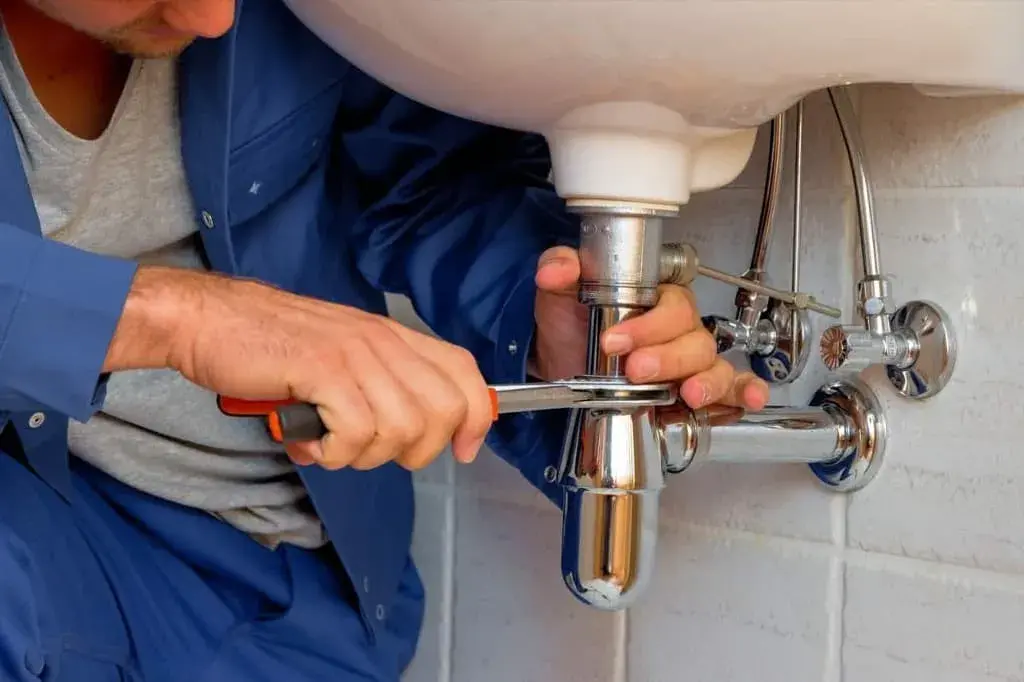
Another common plumbing pipe material is galvanized steel. While it isn’t used a lot in modern piping systems, it was regularly used from the 1950s to the 1990s. Galvanized steel pipes are gray in color and are fairly thick-walled. This makes them very strong and durable, but heavy and cumbersome to work with. This type of pipe will become corroded over time and is best replaced with plastic piping.
ABS Pipes
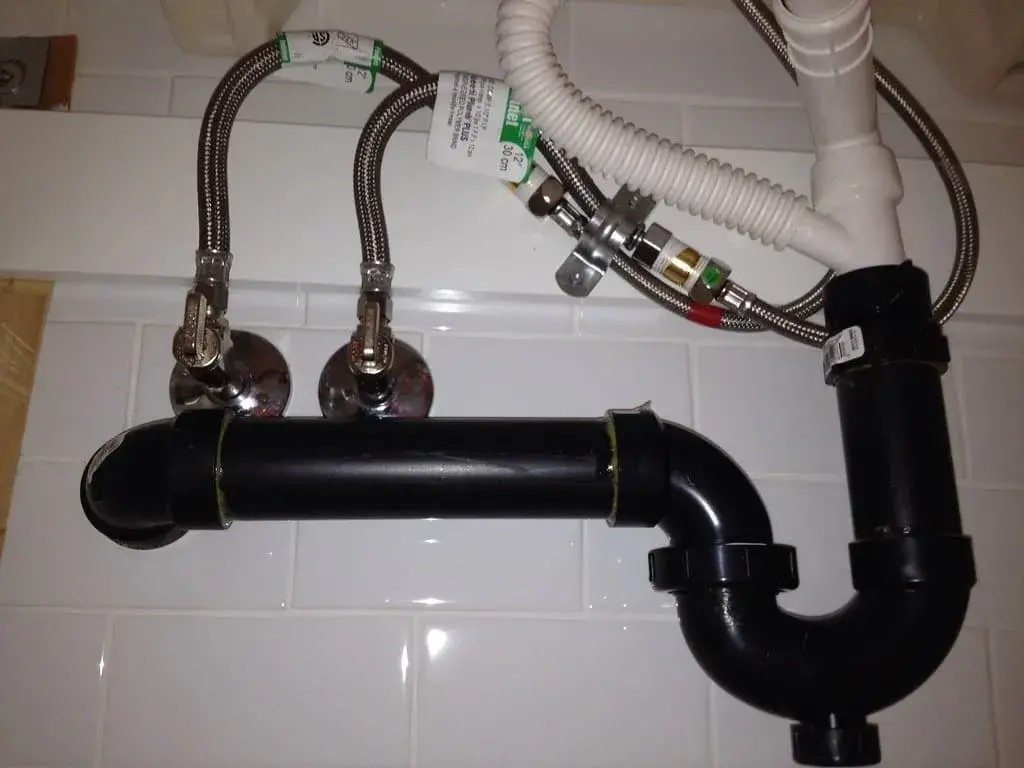
Beginning in the mid-1970s, plastic pipes started to become popular for use in residential plumbing. Acrylonitrile butadiene styrene, or ABS, pipes were the first type of plastic pipes to be used in homes. ABS pipes are black in color and are lightweight and less expensive than metal pipes, and because they are plastic, there is no risk of rust developing.
ABS pipes do, however, contain a chemical called bisphenol A, also known as BPA. There is disagreement as to the potential health risks of BPA to humans and animals. Though it is considered safe in certain amounts by the U.S. Food and Drug Administration, it is banned from being used in new home construction in some locations.
PVC Pipes
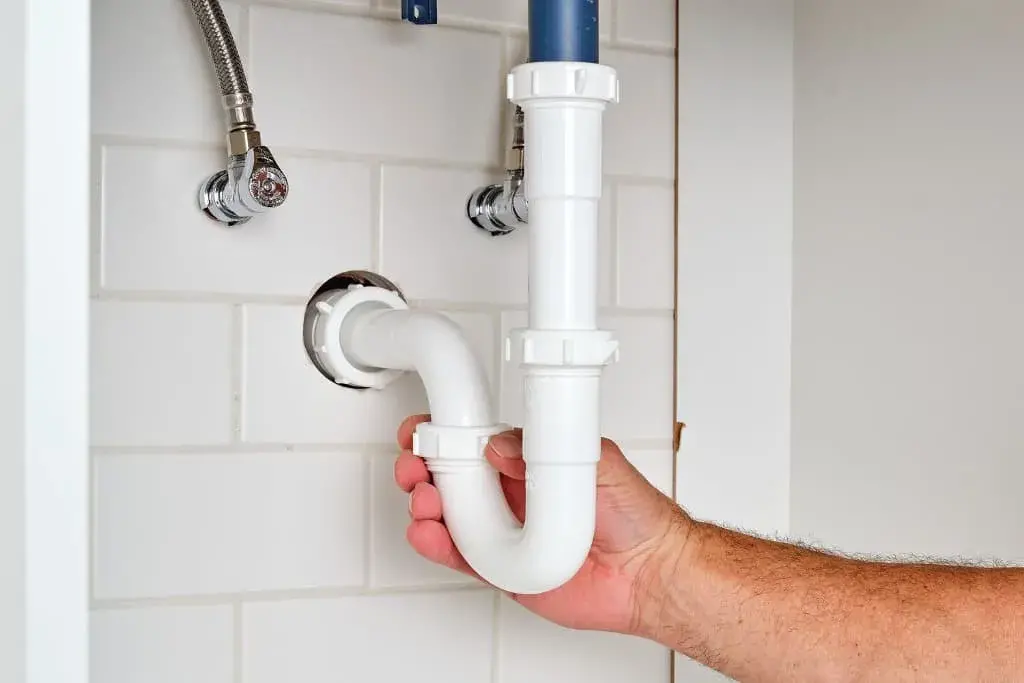
Polyvinyl chloride (PVC) pipes are the most common option for residential plumbing systems and has been for the last 40 years. PVC is usually white in color. It’s flexible, durable, and lightweight, which makes it easy to use. PVC pipes are also good at muffling the sound of water as it flows through the piping systems; is resistant to chemical and water degradation; and is less expensive than other options.
Why You Should Replace Metal Kitchen Pipes with PVC
PVC pipes are the ideal option for residential plumbing. If you currently have metal pipes under your sink, there are some good reasons to upgrade them to plastic PVC pipes. The first reason is that PVC pipe is significantly less expensive to replace. Down the line, if you have to make repairs, it’s going to be a cheaper project.
Secondly, PVC pipe is easier to work with because it’s much easier to cut. You can invest in a PVC pipe cutter, but really, the hacksaw you have in your garage will do the job just as well. Lastly, PVC pipes don’t rust, and metal pipes do. With PVC piping, you won’t have to worry about holes and leaks in the pipes due to corrosion.
Understanding Sink Pipe Components
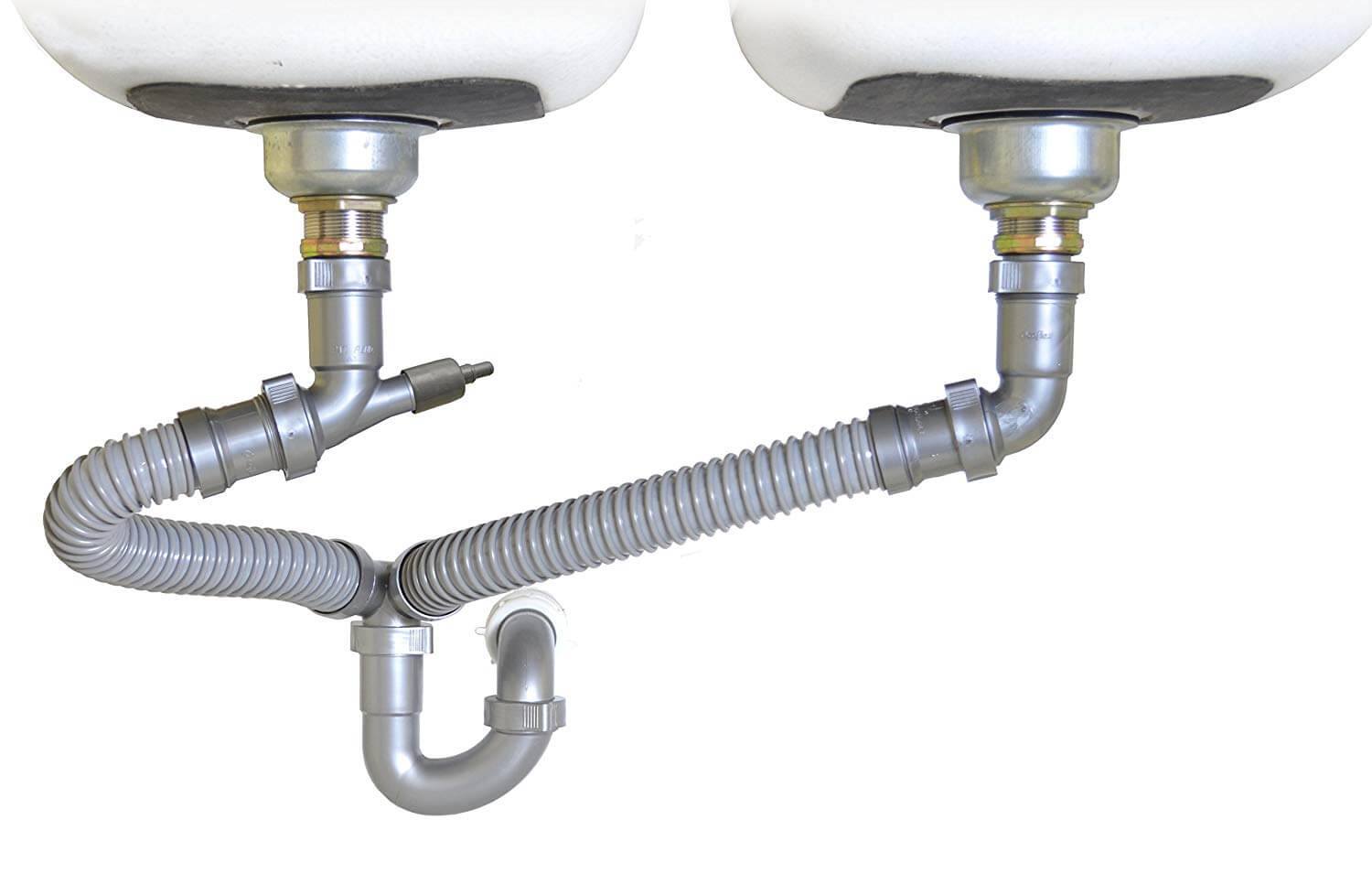
At first look, the pipes under your sink may look a bit complicated, but the system is actually quite simple. There are three main parts: the tailpieces, P-trap, and the compression fittings that hold them together.
Drain Tailpieces
The tailpiece, also called sink tailpiece, is the short piece of pipe located between the sink drain at the bottom of the sink and the P-trap. This pipe should be 6”-10” to provide proper drainage.
P-Trap
The P-trap is the curved piece of pipe that attaches to the sink tailpiece. It consists of two parts, the U-bend and the trap arm. The U-bend is the curved section of pipe and the trap arm is the straight section of pipe that is connected to the U-bend.
The P-trap is a feature of the piping system that is designed to trap water at the bottom of the curve so that sewer gasses cannot pass through into your kitchen. As you run water in the sink, the old water in the P-trap is flushed out and new water replaces it.
Compression Fittings
The P-trap parts are assembled with compression fittings, which are a type of coupling used to connect two pipes or a pipe to a fixture or valve. Compression fittings are used because they are easy to install and disassemble when you are repairing or replacing pipes.
Steps for Properly Changing Kitchen Sink Pipes
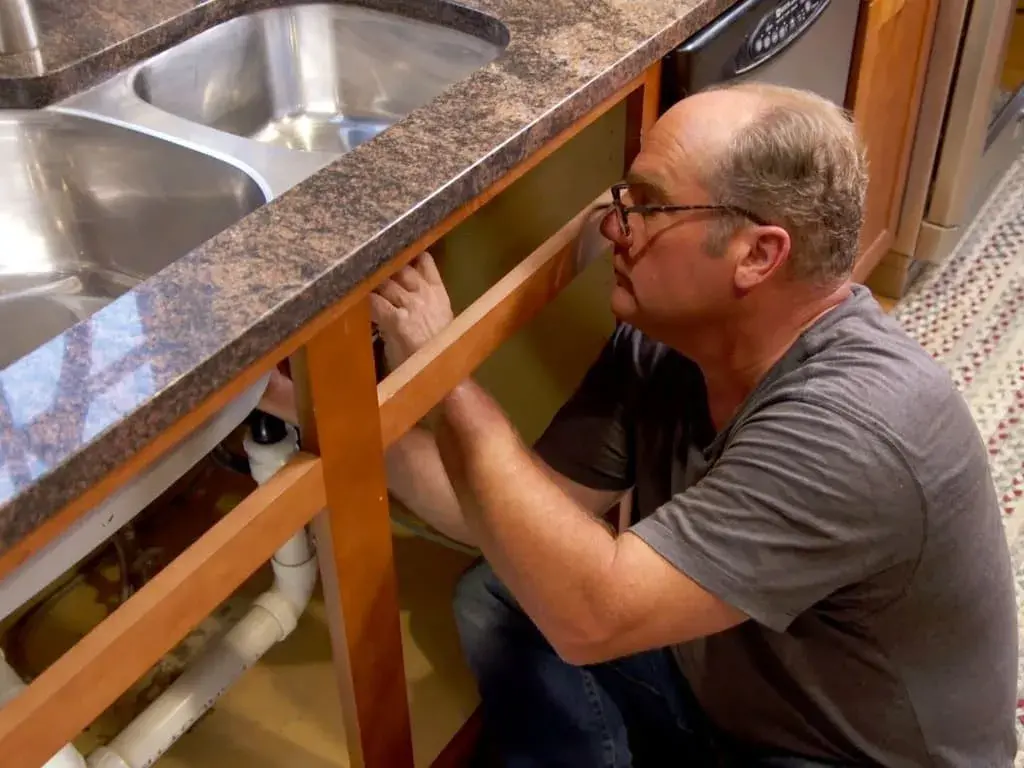
Changing your metal kitchen sink drain pipe to PVC isn’t as difficult as you think. Here are the steps to follow to replace your current system with PVC:
- Turn off the water using the valves located under the sink.
- Remove the old pipes. Do this by unscrewing the nuts that connect the P-trap to the tailpiece and the waste line with an adjustable wrench or pliers. If you find that the nuts are hard to loosen or are stuck, try using a spray lubricant to loosen them.
- Remove the P-trap by pulling it down from the tailpiece and laterally from the waste line. Remember, it has water in the trap, so hold it upright until you get it to a place where you can dump out the water.
- Separate the old assembly into its component parts so you can easily replace each one with a similar plastic one.
- Cut the PVC pipe into the exact length of the metal pipe you removed. Also, be sure that you use the same size PVC pipe as the metal pipe you’re removing, either 1 ¼” diameter or 1 ½” diameter.
- Connect the drain inlet to the sink tailpieces using the compression nut. Tighten the compression nut by hand so that you’re unable to slide the pipe along the tailpiece.
- Dry-fit the piping assembly by attaching it to the sink drain.
- Attach the outlet of the P-trap to the waste drain with the pipe you prepared for that section. If there are any connections that don’t use compression nuts, use PVC cement to glue them. Make sure that all compression nuts are hand tightened.
- Turn water back on and fill the sink. Then, drain the sink while watching for any leaks in the piping. Tighten any leaky connections.
Things to Consider When Replacing Kitchen Sink Piping
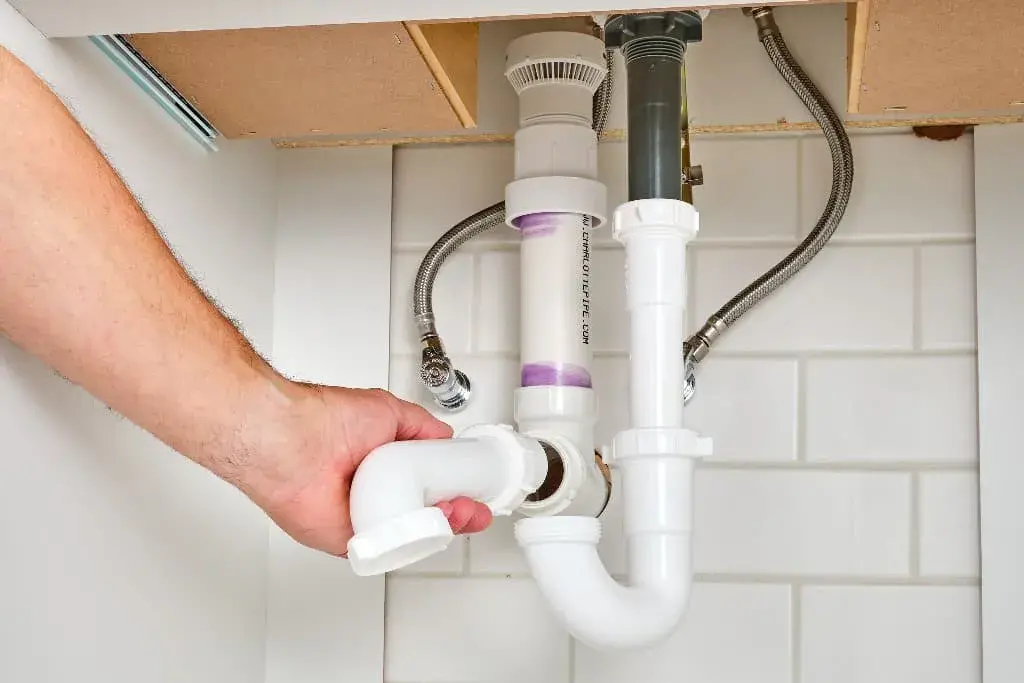
The above are some general instructions for replacing the plumbing pipes under kitchen sink. Here are some tips that will make the process easier for you:
- When there is a garbage disposal under your sink, keep in mind that the P-trap connects to it in the same way that it connects to the sink tailpiece.
- Be sure to measure and cut pipes carefully. This may allow you to do most of the pipe assembly at your workbench, so you don’t have to spend so much time lying on your back with your head under the sink.
- Using plumber’s grease to grease the threads of the PVC compression fittings will make them easier to tighten.
Final Thoughts
Replacing old, corroded, or leaky metal pipes under your sink with PVC pipes is an easier, less expensive, and more durable option than replacing them with new metal pipes. When you follow the steps and tips provided above, you can successfully replace old kitchen sink plumbing yourself, saving money and giving yourself a feeling of satisfaction for a job well done.
To get more information:-

